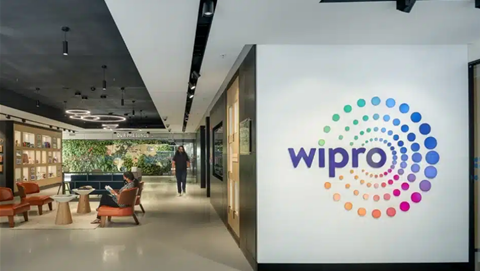What are the real and tangible benefits that organisations can achieve from using multi-cloud – rather than from one cloud provider?
“Companies are realising that relying on a single cloud infrastructure provider is neither wise nor practical. The rationale is that not every cloud is best suited for every workload and, having cloud options has advantages for many reasons: technological, security, locational, and price,” said Chris Chelliah, SVP Customer Strategy, Insight & Business Development, Oracle Asia Pacific.
“We’re also seeing our customers look at multi-cloud for disaster recovery reasons – Maxim’s Group for example is using one of our multi-cloud offerings and others are leveraging our database offerings while keeping, for example, their Microsoft Apps on Azure.”
Data from 451 Research found that over time, the differentiation between cloud providers has moved beyond basic compute and storage and into higher-level managed services. It also said two key motivations enterprises are using multiple clouds – firstly, to have access to vendor-specific capabilities, and secondly cost reduction.
Chelliah said that with the pandemic, companies are now pivoting to doing things remotely, at increased speed than the past and within stretched budgets that were being refactored to accommodate pandemic-related needs.
“What became quickly apparent, once the dust settled was that as much as organisations needed to keep business continuity front of mind, they also needed to innovate, just as fast to keep customers, explore new business opportunities and address new competitors,” he added.
“They wanted to use the right secure, reliable, performant cloud, a range of development tools that could give them access to new capabilities like AI and ML, and data. Think about the likes of Zoom, who we are supporting in a multi-cloud capacity.”
The data these companies needed must be able to easily tie their key business applications which might be on-premise, or new in the cloud, with their key data stores that might run best on one network, and with analytics services that they might already have invested in on another.

There will be no more important technology than AI and ML. ML and AI algorithms represent the life raft, helping enterprises analyse and continually learn from the massive amounts of data they collect to improve decision-making and inform a range of next actions, and innovate.
-Chris Chelliah, SVP Customer Strategy, Insight & Business Development, Oracle Asia Pacific
Why consider a shift to a multi-cloud?
Some of the key advantages of a multi-cloud approach are flexibility and being able to select from the best.
Companies need to be able to work with different cloud providers to take advantage of the strengths that different cloud providers bring to specific types of workloads, said Oracle’s Chelliah.
“It’s like having the right tool for the right job. It makes it easier to get additional capacity when needed. It eliminates single-source supplier risk and gives more flexibility to get the contract terms you need for different parts of your applications portfolio. It also provides more resiliency - you don’t want to put all your eggs in one basket from a performance perspective.”
While the task to build a multi-cloud architecture does present more challenges and needs to be closely evaluated, Chelliah said basic market dynamics are driving the shift to a multi-cloud as companies look for innovation and seek better services.
The onus is on the tech provider to isolate tenancies and deliver a predictable, financially backed SLA. This include how it runs databases, think about application environments, and drive out new services, whether they are around ML or containers. They will differ from organisation to another.
“Before you were locked in to one technology supplier and had to take what services were on offer – a walled garden approach. Now with high speed and low latency networks you can look for the best service and the best of innovation in each cloud and get a DR approach that is helpful too.”
“Every company I speak to wants to be data driven and do more with data. That typically leads them to want to have their data and applications close to each other to avoid things like latency.
“The given thought is that as you amass more data, the more apps and services tend to rely on that data, which in the old world, and with some cloud providers makes it difficult, and in some cases costly to move it.”
How can we leverage AI and ML to make the cloud richer and more innovative?
On whether AI and ML are becoming a core competency for digital enterprises and making it a richer environment for innovation, Chelliah said: “There will be no more important technology than AI and ML. ML and AI algorithms represent the life raft, helping enterprises analyse and continually learn from the massive amounts of data they collect to improve decision-making and inform a range of next actions, and innovate.
“For the most part, enterprises are still experimenting with ML/AI. For example, marketers are starting to use ML-based tools to personalise offers to customers and measure how satisfied they are at different digital touch points. Trucking companies are applying ML algorithms to map out the most optimal routes for their drivers. ML-based systems are even helping governments match refugees with the most suitable communities to live.
However, in tight labour markets and with technology rapidly evolving, among the continuing challenges to going multi-cloud is in finding the requisite skills.
Chelliah said a multi-cloud approach needs to be easy so it can bring data together, match it with the right developer tools and take advantage of ML.
“Developers can leverage out-of-the-box models that have been pre-trained on business-oriented data or custom training the services based on their organisation’s own data and help developers with a range of complex tasks from language to computer vision, and time-series forecasts.
“Or they can use multi-cloud to bring data together with our cloud applications that have ML embedded in them so they can uncover hidden insights in their HR data for instance around hiring bias, or from their finance applications around which providers’ products are the most reliable,” said Chelliah.










